Backpacking with braces
During my 2012 JMT section hike and 2013 JMT thru-hike, I wore orthodontic braces. Before hiking, I thought it was going to be a hassle in some way or another. This didn’t discourage me from going on the hikes, but it did add an extra dimension to plan for.
Looking back now, having braces while backpacking was both an annoyance, and no big deal. With the help of proxy brushes and the world’s best therapist, Mother Nature, I was able to manage them and have a great time.
What’s the big deal?
So why even talk about braces in the outdoors? For me, backpacking with braces and what extra that might entail was akin to crapping in the backcountry, or dealing with menstruation in nature. It’s not rocket science, but having a plan for it could help make the experience more about hiking and less about logistics.
While there’s comprehensive information out there about life as an adult with braces, that covers a refreshingly wide array of adult topics (yes, that), the logistics of backpacking with braces is not well-covered. I wasn’t able to find any info geared towards teens either (though I did see a high-schooler on the trail rocking them). It could be that I was the only metal-mouth who wondered how it would affect backpacking, but I suspect that if I’m asking, others are too. If my experience could be helpful to anyone else making outdoor trip plans, I’d be thrilled. As usual, YMMV.
So what issues had I anticipated, and how did I deal with them?
I had two main concerns: fear around extra risk, and cleaning logistics.
No fear needed
Let’s start with my risk fears. I have been afraid of breaking my teeth for as long as I can remember, and having braces had amped that up, hard. Backpacking in remote mountain wilderness sounded even iffier for my tooth safety than regular life. My logic went something like this:
- I am afraid of breaking my teeth in a fall, and breaking them with braces must be worse than regular breaking.
- I must be more likely to fall while climbing up the Sierra Nevada.
- Ergo, I will definitely break my teeth and braces — maybe even face — during this trip, and that would suck. I might even die, in some dreadful, tooth-related manner.
(Just kidding on that last part, I didn’t get that catastrophic. This time.)
I envisioned a horrifying accident where my teeth were dangling by the wire and I couldn’t get to a dentist quickly, and I would lose my teeth *and* all the time I’d put into the braces.
Now, I can’t say that it wouldn’t have been bad if I had somehow broken a tooth, or a bracket. I didn’t, though. And if I had, it would have been bad because I BROKE A TOOTH, not because of the braces.
Other things I didn’t break? My face. My legs. All of my limbs, really. Wind. (Just kidding, that’s a HUGE LIE.) All of my gear. Fingers and toes.
In fact, I was substantially less destroyed at the end of both trips than I feared. As in, none destroyed. I came home from the hike feeling stronger than ever.
You see, what I figured out was that my risk fears weren’t really about the braces. This amplification of worry around a small issue was one way for me to manifest my overall backpacking trepidation in a manageable form. Instead of worrying that I was going to die, I could focus on something smaller.
Once I got a few days down the trail, I could see clearly that there were far larger dangers than my hypothetical tooth breakage, and the irrational fear melted away. And the reasonable concerns (falling off the mountain! being eaten by a cougar!) were so large they stopped being worth fretting about, and I found my tranquilo.
Logistical fun with proxy brushes
Worries aside, there was still the issue of logistics. For those of you who have had braces, you know that life is basically still the same. Sure, you might have a lisp at times (or all the time). Sometimes you get greens stuck to a bracket and everyone is too dickish polite to tell you. Flossing is generally a torturous endeavor involving a curved plastic needle (my choice), single-use floss, or really top-notch skills freehand aiming-and-threading skills.
In general, though, I didn’t need many accommodations to live with braces. Mirrors are great for threading floss and spotting food stuck in the brackets, and those abound in civilization, so no big deal. Electric toothbrushes do a great job of getting all the nooks & crannies on both the teeth and the brackets.
I didn’t need medication to have a comfortable day with braces, beyond Ibuprofen the day after an adjustment; some people may also use wax to smooth over poking bits of wire.
By the time I left for the first hike in July 2012, I had six months of braces-living under my belt, and I had my routine down pat. I stashed tiny bottle brushes (proxy brushes like these — large and small) everywhere — pocket, bag, purse, car, desk, bathroom, floor, bedside table — and carried a mirror to check for stuck food. I even had a good system going with my partner in which all I had to say was “snacks?” (short for “snacks in the cracks?” — thanks Chelsea!) and he would check and let me know if I had any stragglers.
Taking care of stuck food was more than an aesthetic issue for me as a braces wearer. Stray chunks could increase gum inflammation, which was already a risk while my teeth were getting moved around, stretching the gum tissue, or decay, which is hard to deal with during ortho treatment.
Throw that set-up out into the backcountry, and it gets a bit more complicated. I’m happy to report, however, that I found ways to deal with all of these logistics, and here’s how:
Mirrors: I carried a 1.5″x2″ mirror that I’d broken off some free makeup do-hickey. This lived in a belt pouch, and I checked it after every meal and every snack. After a while, I got better at sussing out hiding spots with my tongue, and the need to check decreased.
Picking: Proxy brushes, proxy brushes, proxy brushes. I brought along at least four of these tiny bottle brushes (on my 20 day hike), and kept one in my belt pouch at all times. And used it. A LOT.
Brushing & flossing: I flossed every night on the shorter trip, but only 3 or 4 times on the longer trip. Bad Alice. I balanced my wee mirror on my knee and found the right angle for my headlamp to illuminate the necessary region — this gave me two hands free to floss. I brushed nightly with a travel toothbrush from REI, nothing special there.
The curve-ball, or how I re-learned to eat beef jerky
The surprise challenge on the trail ended up being jerky. I happen to love jerky, but I had been avoiding eating it and anything else I had to tear with my teeth since getting braces. On the trail, I avoided eating it for a few days, but after watching my hiking companions enjoying it during that period, I gave in, and re-learned to use my canines.
Part of the challenge was that my teeth were now in new locations — they met in different places than I was used to, and I had to re-establish tooth proprioception, if you will. Once I got a hang on that, it was a matter of relearning how much force to apply, and regaining trust in myself. Oh, and being willing to spend hours trying to get shreds of meat out of my teeth.
I probably spent half the trail both years with jerky stuck in some embrasure or contact. It brought new meaning to “save some for later”.
Backpacking with retainers
Two weeks after returning from my 2013 JMT hike, my braces were removed, and I proceeded to the retainer stage of treatment. Fast forward to now: it has been 6 months post-removal, and I only have to wear my retainer at night. This makes backpacking logistics way simpler.
I’ve weighed my retainers and case (1.2 oz!), and added them to my gear list for my upcoming PCT thru-hike attempt. They’ll stay clean (enough) with semi-regular brushing, if my at-home care is any indication. Perhaps I’ll hit up a drugstore during town stops or make a resupply box request for denture cleaner to really make them sparkle.
The biggest impediment to thru-hiking with braces was the frequency of adjustment appointments. I had to go in to get my arch-wire tightened every 3-6 weeks, and had no desire to be leaving a thru-hike to travel back to the Bay that often. If I hadn’t minded the thought of delaying treatment for the duration of the trail (i.e. leaving braces as-is, adjustment-wise, for 4-6 months), the devices themselves certainly wouldn’t have gotten in the way of my hike. For a trip as short as the JMT, this wasn’t an issue.
The nicest part of having hiked with braces is that now my teeth are super SUPER easy to clean. Flossing takes a quarter of the time it did both during and prior to having braces. Brushing is simpler, and my gums are healthier. Since dental hygiene is annoying enough to deal with in the wild, it’s lovely to be starting from a better baseline now.
Happy hiking!

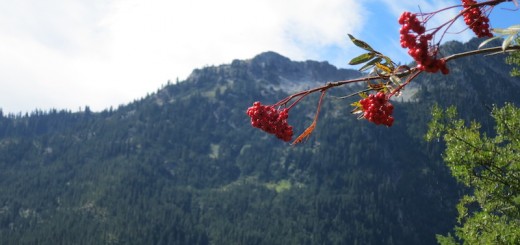
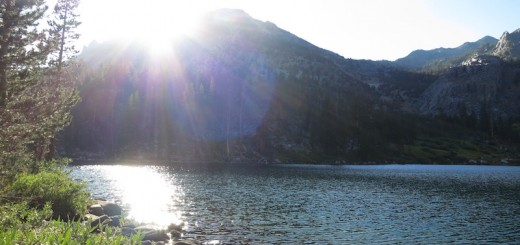
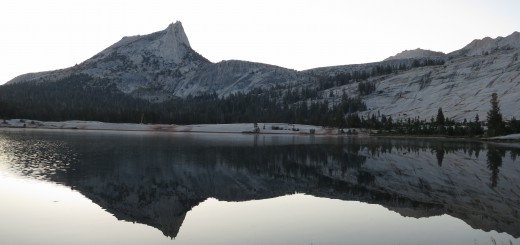


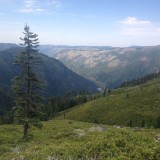


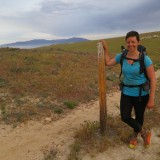

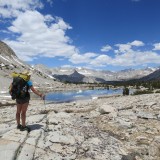
Thanks for sharing this post.
I had braces for the last year and a half or so. I actually found them to be less trouble on backpacking trips than in everyday life – animals didn’t care that I was a 28-year-old with braces whereas people judge. Or – even if people didn’t judge I would project it.
The only extra hassle I found from braces on backpacking trips was that they would rub a lot on my lips when they got dry. They also tended to get a extra little cold (I had metal ones, not ceramic) if I would breath through my mouth huffing and puffing up a pass or something.
Thanks, Chris. It’s great to hear about someone else’s experience too.
I know what you mean about projecting judgement. I expected to get far more comments about the braces than I actually got. The main one I did get was that I looked younger than my actual age (28-29), and I assumed that was part of the sentiment behind the several surprised “oh, you’re hiking this alone?!” comments I got. Who knows, eh?
I wouldn’t have thought about the cold effect of metal brackets. I didn’t experience that with my ceramics ones or the molar bands, which I am now thankful for. I did get a bracket stuck on my shirt while wiping sweat off my face after a big climb, and that was painful and awkward. And the extra drooling at night made my face a bit grimier.
Hope you’re getting yours off soon — it’s a wonderful feeling to have it in the past!
Hi, today I am leaving for a 4 night trip at Old Rag Mtn. I have braces and these tips are going to be helpful for my survival haha! Thanks a ton!
Hi there! I’m planning a 3 day hike and I was wondering what you ate (besides jerky lol)? Before getting braces I used to carry muesli bars and nuts, which with braces I cannot eat.
Thank you for this post! I’ve got a hiking trip coming up with my dad later this year, and have been worried about how to manage my braces. I’m glad to hear that it isn’t too big of a deal, and that even jerky is possible. I’m also curious what foods worked best for you? I usually like snacking on nuts and dried fruit during the day, but both of those clog up the braces big-time.
I’m wondering about portable light weight hiking lunch and snacks, too. Breakfast and supper will be cooked, so no problem.
And girls, I am 70! I always judged older women with braces as too vain, but now I’m one of them; now I know older people get them fo shifting alignment…a lesson in compassion!
Dried fruit and nuts were my staple snacks on the AT. Now I am thinking of filling a small nalgene cup with dried fruit and a little water to rehydrate as I walk so it will be soft when I want it. I have also thought about having a small container of peanut or almond butter to eat with a spoon when I would have had nuts.
YOU ARE A LIFE SAVER. Thank you millions!!!